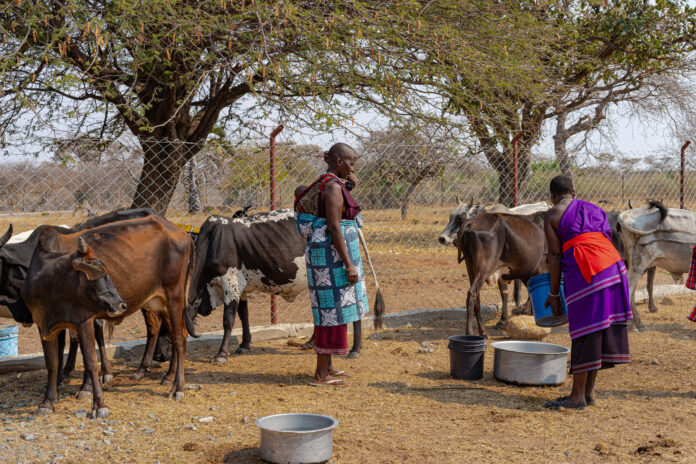Dryland ecosystems, covering over half of the world’s terrestrial land, are facing significant challenges due to climate change, land degradation, and unsustainable practices.
Rangelands are extensive areas of land characterized by native vegetation such as grasses, shrubs, and sometimes dispersed trees.
These regions are particularly vulnerable, and their management requires a holistic approach that considers ecological, social, and economic factors.
A recent stakeholders workshop in East Africa highlighted the urgent need for effective dryland management. Participants emphasized the importance of integrating gender perspectives, leveraging indigenous knowledge, and strengthening community-based initiatives.
“There are many good policies but very little on the ground,” noted Verona Collantes, a senior gender specialist at The Global Environment Facility (GEF).
Gender equality and sustainable drylands
Gender disparity is a pressing issue in dryland management. Women, often disproportionately affected by climate change and land degradation, are frequently excluded from decision-making processes.
“It’s not enough to simply refine separate gender action plans… but to integrate the plan into the project components, activities, and results framework,” said Fritjof Boerstler, the Global Coordinator of the GEF-7 Impact Program.
Fritjof is the team Leader Special Initiatives & Global Coordinator GEF-7 Dryland Sustainable Landscapes & Food Systems, Land Use and Restoration Impact Programmes Forestry Division, at the Food and Agriculture Organization of the United Nations (FAO).
To achieve sustainable outcomes, it is crucial to mainstream gender equality throughout all aspects of dryland management.
As Karen Elizabeth, a gender expert, noted, “Women’s involvement is not factored in from the project design…
The Gender Policy Officer at the United Nations Convention to Combat Desertification (UNCCD) noted that integrating gender into environmental projects ensures that the needs and contributions of both men and women are recognized and addressed.”
The power of indigenous knowledge
Indigenous communities have centuries of experience living in and managing dryland ecosystems.
Their traditional knowledge offers valuable insights into sustainable practices, climate adaptation strategies, and resource conservation.
By recognizing and incorporating indigenous knowledge, we can develop more effective and culturally appropriate solutions.
Fritjof Boerstler, Global Coordinator of the GEF-7 Impact Program, emphasized the importance of indigenous knowledge: “Indigenous knowledge is key… It’s a system that has evolved.”
Community-based approaches
Local communities are the stewards of their lands. Empowering them to participate in decision-making and implement sustainable practices is essential for long-term success.
“It’s very important to bring all the stakeholders, including decision-makers, donors, and local communities, to work together,” shared Bora Masumbuko, a Senior Program Officer at the International Union for Conservation of Nature (IUCN).
This is what it will take to unlock women access to digital finance
Community-based initiatives can promote ownership, resilience, and innovation in dryland management.
Key recommendations
To address the challenges facing drylands, the workshop participants made several recommendations:
- Mainstream gender: Integrate gender perspectives into all aspects of dryland management.
- Invest in women-led initiatives: Support women’s leadership and empowerment in sustainable land use.
- Promote knowledge sharing: Facilitate collaboration and exchange of knowledge among stakeholders.
- Strengthen community-based approaches: Support local communities in implementing sustainable practices. An example is the pigeon pea intercropping, which has improved resilience to drought in Malawi.
- Address policy gaps: Create a conducive policy environment for sustainable development. This calls for stronger regulations and frameworks to support sustainable land management, particularly around charcoal production and indigenous seed exchange. In addition, there is a need to address the inadequate financial investment in scaling up successful community-led initiatives such as energy-saving stoves and drought-tolerant crops.
The role of rangelands
Bora Masumbuko, from the IUCN, emphasized the critical role of rangelands in dryland ecosystems. She emphasizes the significance of rangelands, yet remain underappreciated and understudied.
“Rangelands do not receive enough attention, and there’s a knowledge gap when it comes to rangelands,” she noted.
Rangelands, which cover over 50% of terrestrial land globally, and 80% in Kenya, provide valuable ecosystem services such as carbon storage and climate regulation.
However, drylands are often overlooked and degraded. Masumbuko called for increased efforts to restore and manage rangelands sustainably.
A path forward
The experts noted that by adopting a holistic approach that integrates gender equality, indigenous knowledge, and community-based initiatives, we can create more sustainable and resilient dryland ecosystems.
It is imperative to prioritize these strategies and invest in effective dryland management for the benefit of both people and the planet.
“We’re looking into those examples, and it doesn’t stay with the national project… we bring it up to the global policy arena,” said Boerstler.








